Rosettozyma Q.M. Wang & F.Y. Bai gen. nov.
Index Fungorum number: MB 828831; Facesoffungi number: FoF
Etymology: the genus is named based on the morphology of the vegetative cells forming a rosette.
This genus is proposed for the clade represented by CGMCC 2.3446, which formed a separate clade from other orders and taxa in the Microbotryomycetes. Member of Microbotryomycetes. The genus is mainly circumscribed by the phylogenetic analysis of the seven genes dataset, in which it occurred as a separate clade within the Microbotryomycetes (Fig. 4).
Sexual reproduction not known. Colonies white, butyrous. Budding cells present and always form rosette-like clusters. Pseudohyphae and hyphae not produced. Ballistoconidia formed.
Type species: Rosettozyma petaloides Q.M. Wang, F.Y. Bai & A.H. Li.
Note: – Except the genus Rosettozyma, species in Yamadamyces and Meredithblackwellia also form rosette-like cell clusters (Golubev & Scorzetti 2010, Toome et al. 2013).
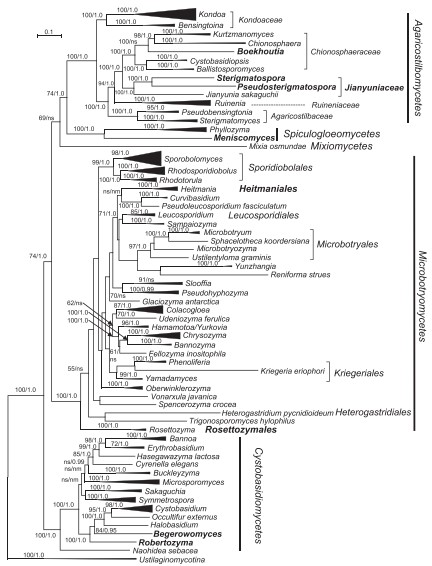
Fig. 4. Phylogenetic tree inferred using the combined sequences of RPB1, RPB2, TEF1, CYTB, SSU rDNA, LSU rDNA D1/D2 domains and 5.8S rDNA, depicting the phylogenetic positions of new taxa (in bold) within Pucciniomycotina. The tree backbone was constructed using maximum likelihood analysis. Bootstrap percentages of maximum likelihood analysis over 50 % from 1 000 bootstrap replicates and posterior probabilities of Bayesian inference above 0.9 are shown respectively from left to right on the deep and major branches. Bar = 0.2 substitutions per nucleotide position. Note: ns, not supported (BP < 50 % or PP < 0.9); nm, not monophyletic. The new taxa are in bold.
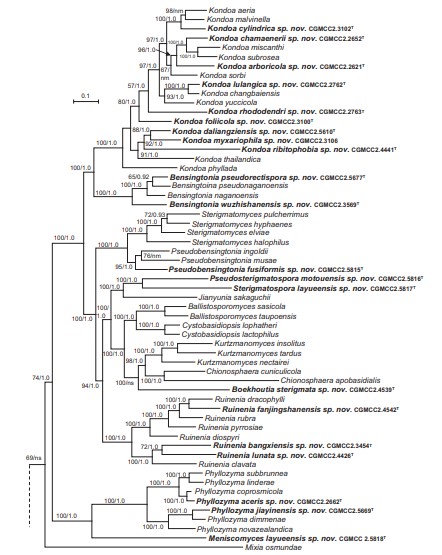
Fig. 4. (Continued).
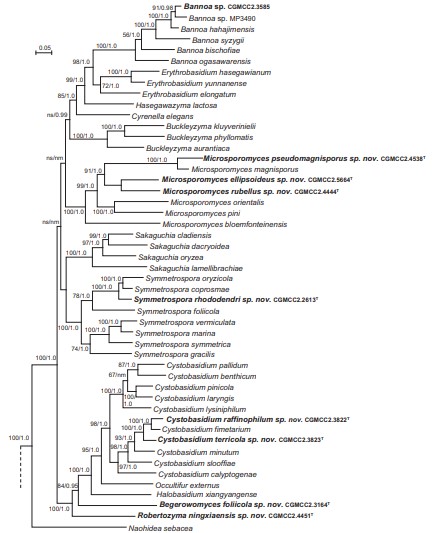
Fig. 4. (Continued).
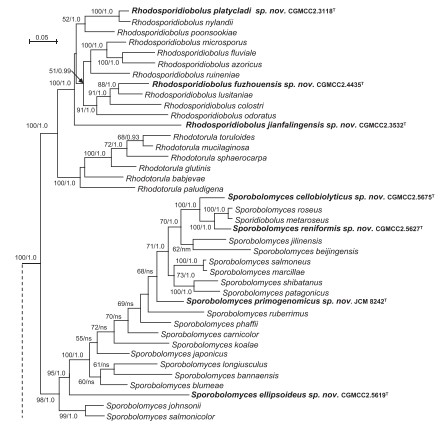
Fig. 4. (Continued).
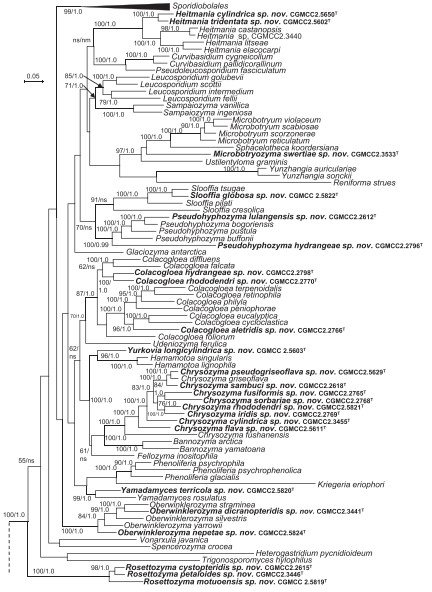
Fig. 4. (Continued).
Species
